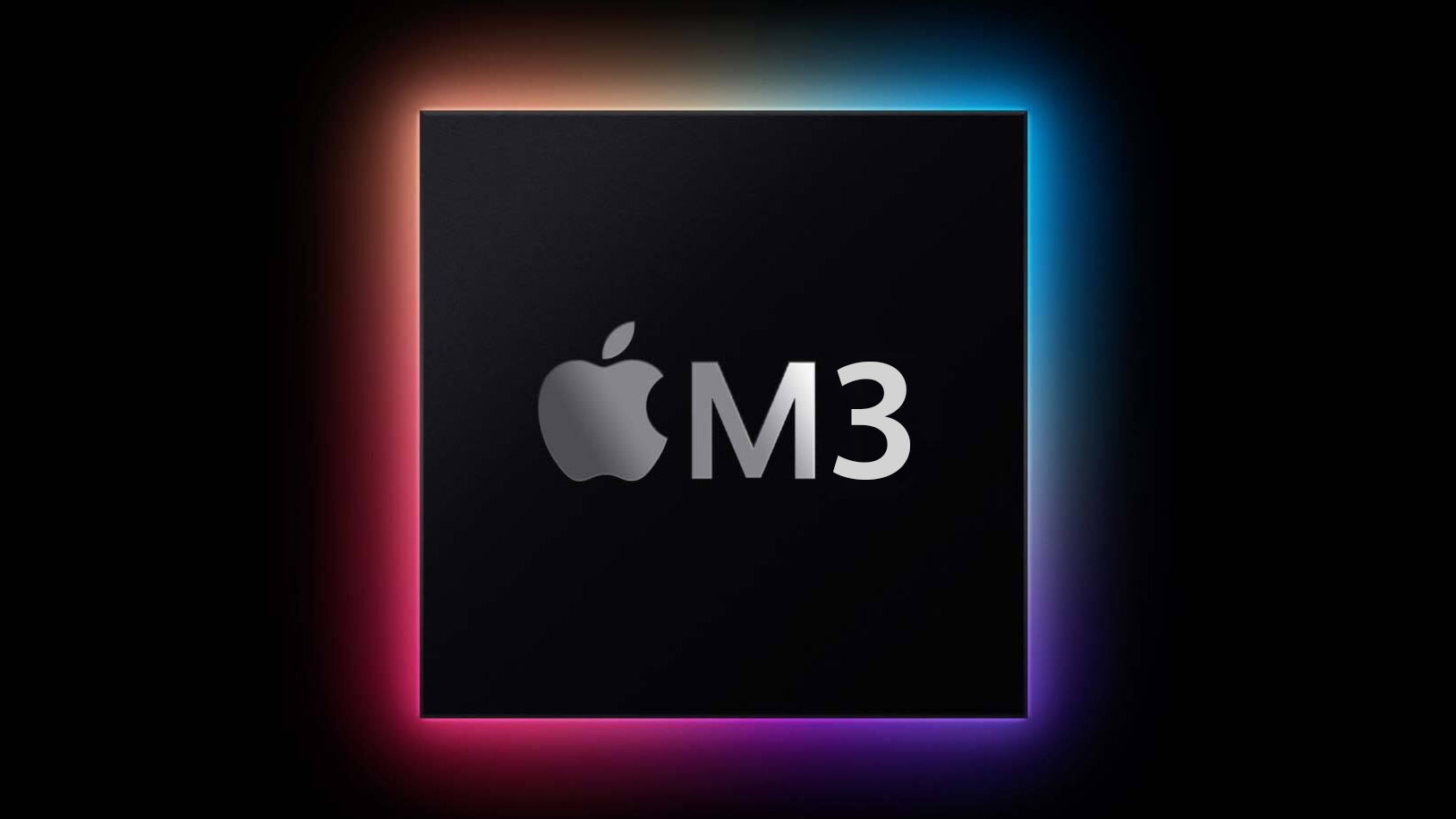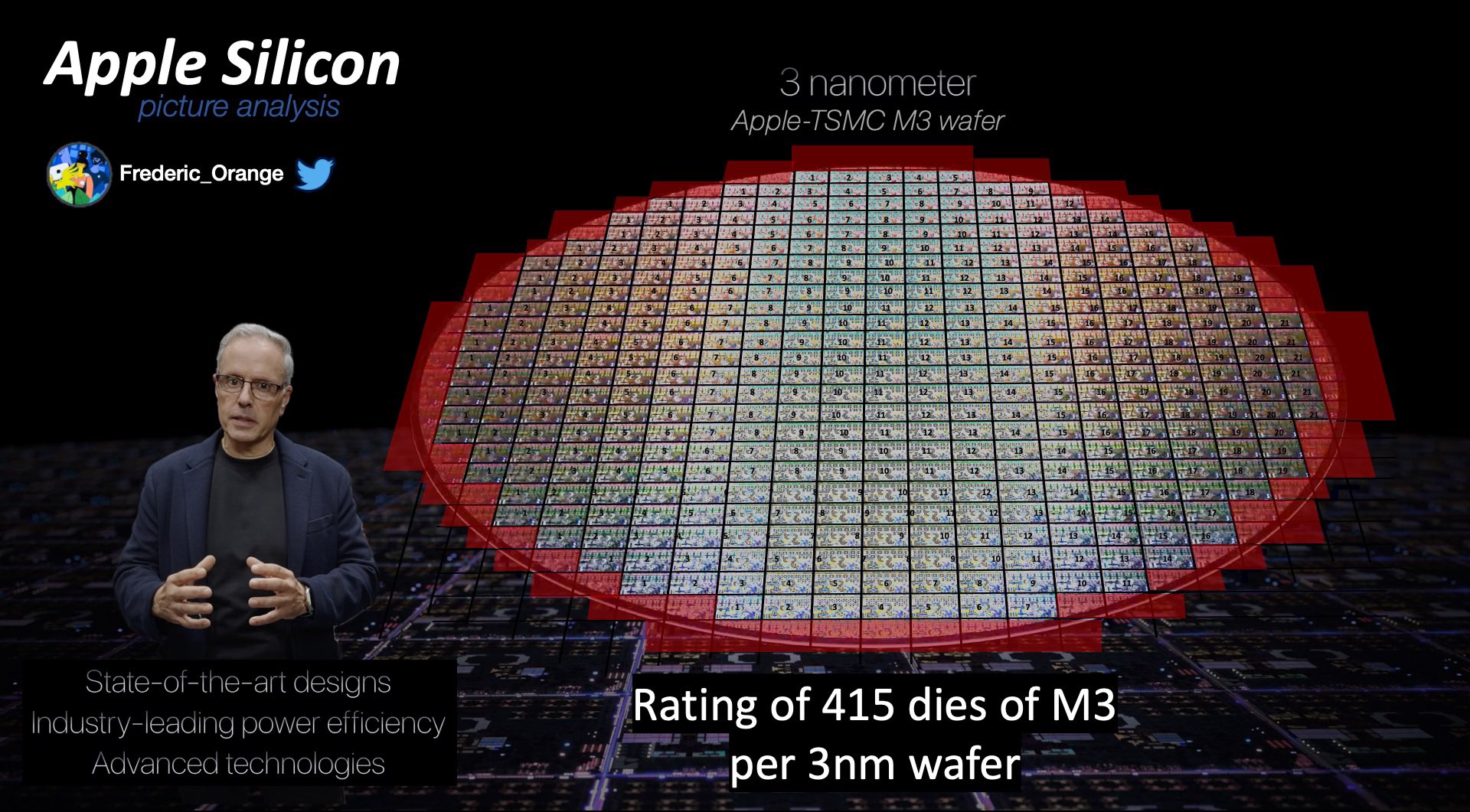Apple Spent $1 Billion to Tape Out New M3 Processors: Analyst

Apple's A17 processor was the first chip to use TSMC's N3 (3nm-class) process technology, and this week, the company expanded its N3 lineup with a family of PC-oriented M3 chips for desktop and laptop computers. Analyst Jay Goldberg from Digits to Dollars believes the company spent as much as $1 billion on M3's design and tape-outs alone.
"We have to assume that [M3-series] tape out costs alone for the three [SoCs] has to be close to $1 billion," Goldberg wrote. "Very few companies can afford this large an undertaking."
Apple's M3 family consists of three fairly complex CPUs for now: the 25-billion-transistor M3 that's aimed at entry-level and mainstream desktops, laptops, and high-end tablets; the 37-billion-transistor M3 Pro for performance-mainstream machines; and the M3 Max that packs 92 billion transistors for high-end laptops and entry-level workstations. Each chip is designed to address different computing needs, from everyday tasks to professional coding, heavy engineering simulations, and video production.
| SoC | M3 | M3 Pro | M3 Max |
| CPU P-Cores | 4-core | 6-core | 12-core |
| CPU E-Cores | 4-core | 6-core | 4-core |
| GPU | 10-cluster | 18-cluster | 40-cluster |
| NPU | 16-core/18 TOPS | 16-core/18 TOPS | 16-core/18 TOPS |
| Transistors | 25 Billion | 37 Billion | 92 Billion |
| Die Size | 146 mm^2 | ? | ? |
| Process Tech | TSMC N3B | TSMC N3B | TSMC N3B |
| Memory | 24GB LPDDR5-6400 | 36GB LPDDR5-6400 | 128GB LPDDR5-6400 |
| Memory I/O | 128-bit | 192-bit | 512-bit |
| Memory Bandwidth | 100GB/s | 150GB/s | 400GB/s |
| USB/TB 4 | 2 | 4 | 6 |
Apple's vanilla M3, which comes with eight general-purpose cores and a new built-in GPU, is as complex as AMD's highly praised Phoenix processor (25 billion vs. 25.4 billion), whereas the M3 Pro and M3 Max are considerably more complex.
In fact, with 92 billion MOSFETs inside, the M3 Max is the most complex single-die processor released to date (though, based on what we know about some of the upcoming AI processors, not for long).
Apple used TSMC's N3 fabrication process to increase the economic efficiency of its M3 family, a risky move because the technology is relatively new -- but it looks like it has paid off. As chip detective @Frederic_Orange pointed out, Apple could presumably fit as many as 415 M3 dies on a single 300-mm wafer, which indicates a die size of around 146 mm^2.
By contrast, AMD's Phoenix (which has a similar complexity) has a die size of 178 mm^2. We can only guess whether Apple's M3 is cheaper to make than AMD's Phoenix based on rumors about TSMC's quotes, but smaller chips are typically easier to yield and produce.
Apple spent $26.251 billion on R&D in 2022, and a significant part of this spending was assigned to chip design. The scale of investment in silicon, in general, and the M3-series SoCs, in particular, indicates that Apple is one of the few companies with the economic capability to undertake such development endeavors.
Get Tom's Hardware's best news and in-depth reviews, straight to your inbox.
Developing complex PC-oriented processors requires extended development cycles, often on the order of years, and intense capital investment. When it comes to an all-new platform — such as the Apple M3 family — the cost of development is staggering, particularly in Apple's case since the company tends to develop as much IP internally as possible. With M3, Apple not only uses its own custom general-purpose cores based on an Arm instruction set architecture but also packs an all-new GPU architecture supporting hardware-accelerated ray tracing and mesh shaders, a new AI NPU, and a new multimedia engine.

Anton Shilov is a contributing writer at Tom’s Hardware. Over the past couple of decades, he has covered everything from CPUs and GPUs to supercomputers and from modern process technologies and latest fab tools to high-tech industry trends.
-
NinoPino Really impressive for a 16 thread CPU, in particular considering we are not talking of a brand new CPU but of an evolution design.Reply
It would be nice to have the same information on investments done from the competitors. -
derekullo It's funny how the M3 Max has 2 less e-cores than the M3 Pro.Reply
Guess that allows them to make a SuperMax Titanium later on if needed! -
watzupken Despite the cost for Apple, I don't think it is going to reverse the decline in Apple's Mac. The problem is that M1 was very popular back then because it was surprisingly good, very efficient and don't cost as much as an Intel variant. Fast forward to now, the SOC is mostly more powerful, but design and efficiency have stagnated. Price on the other hand seem to keep climbing. We should see if the M3 will reverse the decline in demand next 2 quarters.Reply -
palladin9479 It's ok, worst case scenario Apple puts a gold foil inlay on a model and sells it for 5K. There are always people willing to throw their money at the latest Gucci bag, I mean Apple product.Reply -
skiwi44 Reply
The issue, as you attest, is that the M1 is still entirely relevant and persuasive for a unique price/performance envelope. I could not believe how much better my M1Pro was than my MBP i9. That, and the MBP package hasn’t changed and has all the combination of features still needed for a modern workload. So, I’m in no rush to upgrade - as I’d guess are most M1 owners.watzupken said:Despite the cost for Apple, I don't think it is going to reverse the decline in Apple's Mac. The problem is that M1 was very popular back then because it was surprisingly good, very efficient and don't cost as much as an Intel variant. Fast forward to now, the SOC is mostly more powerful, but design and efficiency have stagnated. Price on the other hand seem to keep climbing. We should see if the M3 will reverse the decline in demand next 2 quarters. -
skiwi44 Reply
Says the guy, still in his bunker, who hasn’t priced a premium Dell or HP laptop recently……palladin9479 said:It's ok, worst case scenario Apple puts a gold foil inlay on a model and sells it for 5K. There are always people willing to throw their money at the latest Gucci bag, I mean Apple product.
haters gotta hate…. -
ezst036 Replywatzupken said:Despite the cost for Apple, I don't think it is going to reverse the decline in Apple's Mac. The problem is that M1 was very popular back then because it was surprisingly good, very efficient and don't cost as much as an Intel variant. Fast forward to now, the SOC is mostly more powerful, but design and efficiency have stagnated. Price on the other hand seem to keep climbing. We should see if the M3 will reverse the decline in demand next 2 quarters.
Decline?
Apple had over 16% market share prior to the introduction of the M1 toward the end of 2020. As of now its only a little above 20%.
https://gs.statcounter.com/os-market-share/desktop/worldwide/2020
4% is the total "popularity" difference that changed from then to today. -
ThomasKinsley I speak as a tech consumer and not an expert, but it appears that Apple is spreading its talent thin, trying to design iPhone chips and M-series chips simultaneously. It's probably easier for a company like Intel, Qualcomm, or AMD whose business is nothing but designing chips. It doesn't help that other companies managed to poach Apple's talent, including some of the original designers of the M1 chip.Reply
https://interestingengineering.com/innovation/the-strained-relationship-between-apple-and-qualcomm -
skiwi44 Reply
Not at all. The ISA is ARM for all the designs - so the investment in design spreads across the ecosystem. The key was of course whether Apple could make the Mac work on an ARM ISA - and the results speaks for itself. My desktop is a 2021 i7 iMac w/128GB and my M1Pro blows it out of the water in image processing while unplugged.ThomasKinsley said:I speak as a tech consumer and not an expert, but it appears that Apple is spreading its talent thin, trying to design iPhone chips and M-series chips simultaneously. It's probably easier for a company like Intel, Qualcomm, or AMD whose business is nothing but designing chips. It doesn't help that other companies managed to poach Apple's talent, including some of the original designers of the M1 chip.
https://interestingengineering.com/innovation/the-strained-relationship-between-apple-and-qualcomm
Bottom line - Apple is an immensely profitable company (100billion ISD profit last year) with huge amounts of money to invest in anything it wants to. The key question is whether those investments have provided a return to shareholders - and with the "M" chips, the answer is unequivocally "Yes".
